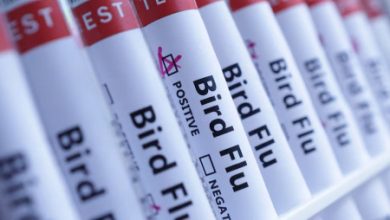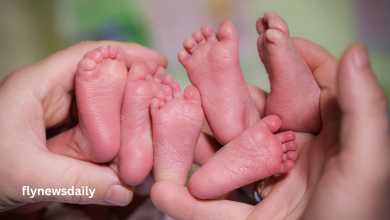
Introduction to Monkeypox
Monkeypox, a lesser-known cousin of smallpox, has been lurking in the shadows of global health for decades. First discovered in 1958 in captive monkeys, it wasn’t until 1970 that the first human case was identified in the Democratic Republic of Congo. Its similarity to smallpox, though less severe, places it in the same family of viruses, Orthopoxvirus. While outbreaks have occurred sporadically, primarily in Central and West Africa, monkeypox gained international attention with its unexpected spread to non-endemic regions. For health professionals, understanding monkeypox’s history and impact is crucial to combatting its resurgence.
Monkeypox’s relevance in today’s global health landscape cannot be overstated. Although vaccines and treatments exist, the disease remains a public health concern, particularly in areas with limited access to healthcare resources. The virus’s zoonotic nature, often transmitted from animals to humans, adds complexity to its control and prevention. Health professionals must remain vigilant, equipped with the knowledge to identify and manage cases effectively.
In this blog post, we will explore the 2024 monkeypox case in depth, examining the outbreak’s timeline, analyzing the response from health authorities, and considering the implications for future public health strategies. Our goal is to provide healthcare professionals with valuable insights and practical advice to enhance their understanding and preparedness.
The 2024 Monkeypox Case
The year 2024 marked a significant turning point for monkeypox, as a new outbreak challenged global health systems. The first cases were reported in March, originating from a remote village on the border of Nigeria and Cameroon. Initial reports were met with skepticism, as monkeypox had been relatively dormant in recent years. However, the rapid escalation of cases soon demanded urgent attention from health authorities worldwide.
The outbreak’s timeline was swift and alarming. Within weeks, monkeypox cases spread beyond the initial region, affecting several neighboring countries. By mid-April, the World Health Organization (WHO) declared the outbreak a Public Health Emergency of International Concern. The disease’s transmission pattern was atypical, with urban areas experiencing a surge in cases, signaling potential changes in the virus’s behavior or human population dynamics.
Health authorities faced numerous challenges in responding to the outbreak. Coordinated efforts were mobilized to contain the spread, involving local health departments, international organizations, and research institutions. Contact tracing, isolation measures, and vaccination campaigns were rapidly implemented. Despite these efforts, the outbreak persisted, revealing gaps in existing public health infrastructure and highlighting the need for improved preparedness.
Understanding Monkeypox
Monkeypox presents with symptoms that can initially resemble other viral infections, making accurate diagnosis crucial. It typically begins with fever, headache, and muscle aches, followed by a distinctive rash that progresses from macules to pustules. Lymphadenopathy, or swollen lymph nodes, is another hallmark sign that differentiates monkeypox from similar diseases like chickenpox and smallpox.
Transmission of monkeypox primarily occurs through close contact with infected animals or humans. Respiratory droplets, bodily fluids, and lesion material can all serve as vectors. For healthcare professionals, understanding these transmission pathways is essential in implementing effective infection control measures. Personal protective equipment (PPE) and strict hygiene protocols are critical in preventing nosocomial infections.
Prevention strategies for monkeypox revolve around reducing exposure to the virus. In endemic regions, minimizing contact with wildlife and promoting safe handling of animals can significantly lower risk. Vaccination, particularly with the smallpox vaccine, offers cross-protection against monkeypox and is recommended for healthcare workers and individuals in high-risk areas. Rapid identification and isolation of cases remain paramount in curbing outbreaks.
Public Health Response
The 2024 monkeypox outbreak prompted a robust response from both local and international public health entities. Initial containment focused on identifying and isolating cases, coupled with extensive contact tracing efforts. The WHO played a pivotal role in coordinating global response efforts, providing technical support, and disseminating guidelines to affected countries. Collaborative research initiatives were launched to better understand the outbreak’s dynamics.
Successful strategies emerged from the response, highlighting the importance of early detection and rapid intervention. Community engagement proved vital, as public education campaigns helped dispel myths and encourage cooperation with health authorities. Vaccination drives, leveraging existing smallpox vaccine stocks, achieved significant coverage in high-risk areas, effectively reducing transmission.
However, the outbreak also exposed areas for improvement. Delayed reporting and inadequate healthcare infrastructure hindered initial response efforts. Data sharing between countries was inconsistent, complicating efforts to track the virus’s spread. The need for stronger regional health networks and investment in surveillance systems became evident, underscoring the importance of preparedness in mitigating future outbreaks.
Future Implications
The 2024 monkeypox case serves as a stark reminder of the ongoing threat posed by zoonotic diseases. The potential for future outbreaks remains a concern, particularly in light of environmental changes and increased human-animal interactions. Health professionals must remain vigilant, equipped with the latest knowledge and tools to respond effectively to emerging infectious diseases.
Preparedness is paramount in safeguarding public health. Building resilient healthcare systems capable of withstanding outbreaks requires sustained investment in infrastructure, workforce development, and research. Strengthening international collaboration and data sharing is crucial in ensuring a coordinated global response to health emergencies.
The lessons learned from the 2024 outbreak offer valuable insights for future public health strategies. By prioritizing early detection, rapid intervention, and community engagement, health professionals can enhance their ability to combat monkeypox and other infectious diseases. The resilience and adaptability demonstrated during the outbreak will guide efforts to protect global health in an increasingly interconnected world.
Conclusion
In conclusion, the 2024 monkeypox case underscores the importance of vigilance and preparedness in the face of infectious diseases. Health professionals play a critical role in identifying, managing, and preventing outbreaks, and their expertise is essential in safeguarding public health. By understanding the disease’s history, transmission, and response strategies, healthcare providers can enhance their ability to combat monkeypox and other emerging threats.
The outbreak highlighted both the strengths and weaknesses of current public health systems, offering valuable lessons for future preparedness efforts. By investing in infrastructure, workforce development, and international collaboration, we can build resilient healthcare systems capable of withstanding future challenges.
As we move forward, it is imperative that health professionals remain informed and engaged in the fight against monkeypox. Continued research, education, and collaboration will be key in protecting global health and ensuring a safer, healthier future for all.



